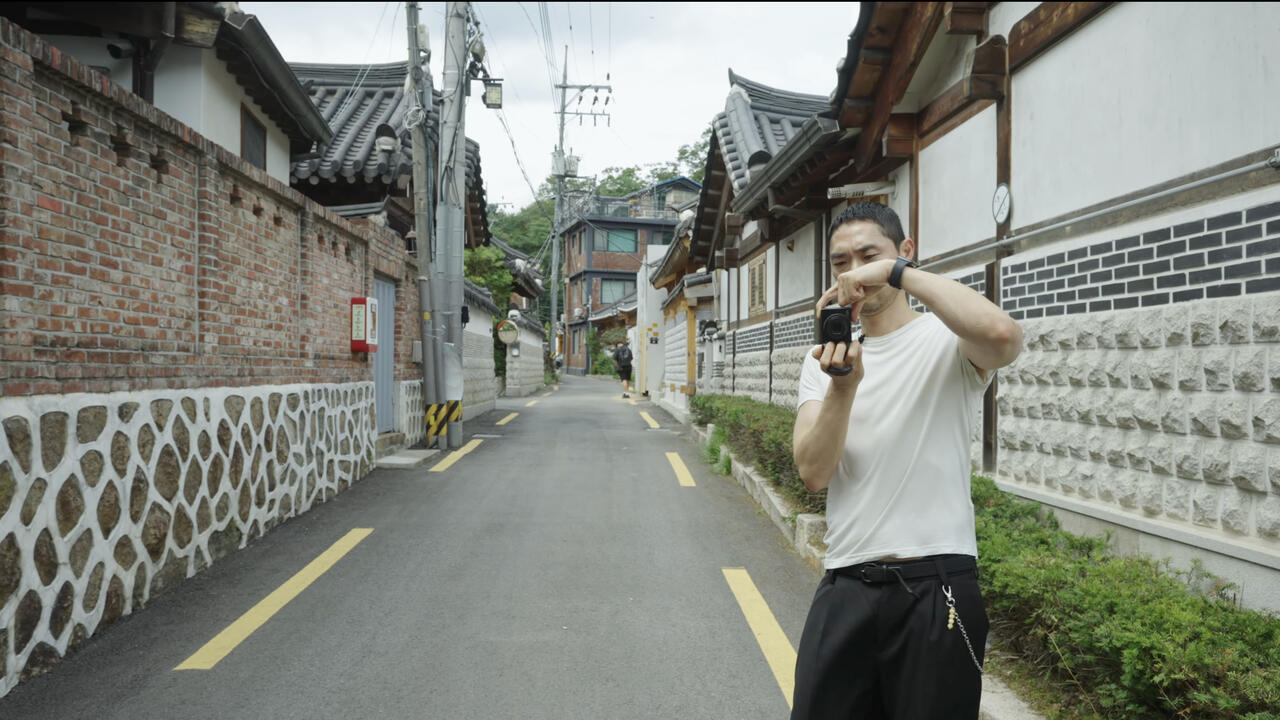Lars Arrhenius

The beginning of a picture story: a young man walks along a footpath. There are no words, no shadows, just a string of computer generated images which look like bathroom tiles on the wall - square, flat and clean - in grey, pink, bright olive, bright umber and turquoise. The line of tiles are joined by two more, one above, one below. In what could be called hyper-imagery (as in hypertext), we start to see the different possibilities that confront the man. In the middle line, after 80 frames, he finally reaches his home unharmed, but in the two alternate lines, numerous incidents affect his journey. In one, he stops for a moment to take off his pullover, passes beneath a ladder and is fatally hit on the head by a falling hammer. In another, a little dog he passed without trouble in the central section, bites him on the hand, causing him to run into a woman carrying a pot plant. Although she is initially angry, after seeing that he is wounded she invites him into her apartment and they possibly begin a love affair.
Perhaps because The Man without One Way (1999) is by a Swedish artist, it reminds me of a recent Volvo ad: a Hip-Hop-hipster strolls along a street, and as he stops to look at a silver Volvo, he unintentionally avoids being hit on the head by a brick. The whole idea, of course, is predicated on the assumption that usually nobody would ever stop to look at a boring, safe Volvo, but the new model is different: still safe, but now it's cool. Razor-sharp sociological reasoning would conclude that what we have here is a play on Existential anxiety in an ever more accelerated, techno-economic environment. In both scenarios, however, random decisions change your life: you turn your head to a life of security - or you're hit by a brick.
Typical middle-class fears are epitomised in aeroplane safety-announcements '...in the unlikely event of an emergency landing...'. As you relax into your seat and concentrate on your newspaper, it's hard not to mentally project a film of a plane dropping like a stone. A certain sense of numb detachment is, perhaps, apt when you're expecting a sudden, everyday catastrophe, and it's well reflected in the deadpan flatness of Arrhenius' images.
The Man without One Way gets killed four times, injured three times, laid once, helps someone who's attacked by a skinhead, and finds a bundle of money in a rubbish bin. Some of the scenarios feel rather forced and hastily introduced, as if they exist only to cover up the fact that, rather than having a story to tell, Arrhenius deals with the basic structures of storytelling - the problem is, however, that really good stories do that anyway. But what makes the piece compelling is how the artist twists the patterns: whereas in one scenario the man inspects a rope, in another he ignores it. Curiosity and pleasure seem to be good reasons to stray from the straight path of safety. On another occasion, he stops to talk to a drug dealer, and as he starts tripping, he literally takes a trip - he floats like a balloon, up and away, out of the image. In another version, he is passed by a huge truck with colourful soap bubbles printed on its side; in the lower frames, he suddenly disappears, as if the bubbles have washed him away.

















